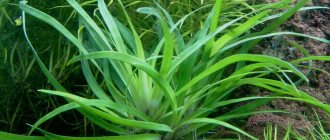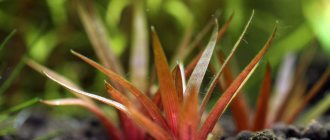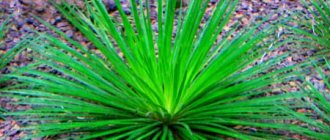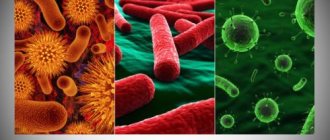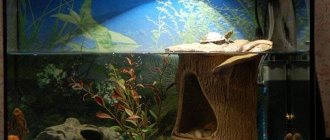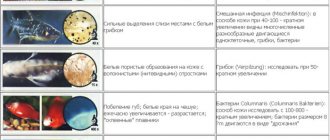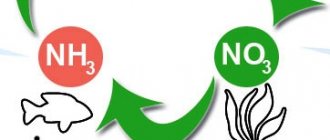This representative of the Eriocaulonaceae family is one of many plants that allow you to create designer aquariums. Great for reflecting tropical flora. It is also used in the organization of species aquariums, where it is adjacent to other plants from its family. Or used in mixed compositions to separate the foreground, middle and background of the landing.
Recommendations
- ^ a b
"
Eriocaulon
%".
Australian Plant Names Index (APNI), Integrated Botanical Information System (IBIS) database
(listing by % wildcard of all taxa related to Australia). Australian Government Plant Biodiversity Research Centre. Retrieved June 20, 2013. - Kew World List of Selected Plant Families
- Sculthorpe, CD Biology of Aquatic Vascular Plants
. Edward Arnold. London. 1967. Reprinted 1985. Figure 11.6. - Kaul, Robert (1966), "Eriocaulaceae of continental North America north of Mexico", Sida
,
2
: 285–332 - Wilson, S.D. and P.A. Caddy. 1986. Competitive ability and species position along natural stress/disturbance gradients Ecology
67: 1236–1242. - Keddie, P. A. and A. Reznicek. 1982. The role of seed banks in the conservation of Ontario coastal plain flora. American Journal of Botany
69: 13-22. - Kaul, Robert (2006), "Eriocaulon", in Flora of the North American Editorial Committee, ed. 1993+ (ed.), Flora of North America
,
22
, New York and Oxford: Oxford University Press - " Eriokaulon
".
Flora of North America
. Retrieved June 20, 2013. - " Eriokaulon
".
Flora of China
. Retrieved June 20, 2013. - Eriokaulon madaiparense
.
| Eriocaulonidae | |
| Actinocephalus bongardii , Brazil | |
| Scientific classification | |
| intermediate ranks Domain: | Eukaryotes |
| Kingdom: | Plants |
| Sub-kingdom: | Green plants |
| Department: | Flowering |
| Class: | Monocots[1] |
| Order: | Poaceae |
| Family: | Woolstem |
Martynov (1820), nom. cons.Type genus Eriocaulon L. - Eriocaulon ITIS
| 39193 | |
| NCBI | 26019 |
| EOL | 8217 |
| GRIN | f:420 |
| IPNI | 30000867-2 |
| FW | 55809 |
Eriocaulonidae
, or
Woolstemaceae
(lat. Eriocaulaceae) - a family of monocotyledonous flowering plants of the order Pormaceae. The family is quite extensive, containing 10 genera with 1150-1200 species.
Taxonomy
In the family Eriocaulonidae the following genera are distinguished:
- Actinocephalus (Körn.) Sano
- Blastocaulon Ruhland
- Eriocaulon L. - Eriocaulon, or Woolstem
- Lachnocaulon Kunth
- Leiothrix Ruhland
- Mesanthemum Körn. — Mesanthemum
- Paepalanthus Mart. — Pepalanthus
- Philodice Mart. — Filoditsa
- Rondonanthus Herzog
- Syngonanthus Ruhland
- Tonina Aubl. — Tonina
Origin
The homeland of Eriocaulon sinerium is warm, well-warmed by the sun reservoirs of southern and eastern Asia, temporary reservoirs of rice fields and numerous swamps, flooded by floods of local rivers, large areas of coastal forests. Here it grows everywhere and spreads well in tropical latitudes. But today this underwater plant can also be found in European Italy, northern Africa, eastern Australia and the North American tropics.
This aquatic plant was first scientifically described in 1810 by naturalist R. Brown. It belongs to the taxonomic family Eriocaulaceae, a suborder of Poaceae. Among the 495 species belonging to the genus “eriocaulon”, this particular plant is suitable for growing in aquariums. The plant's name comes from the word "Erion", a Greek word that literally means "wool".
Links
- Eriocaulonaceae // Encyclopedic Dictionary of Brockhaus and Efron: in 86 volumes (82 volumes and 4 additional). - St. Petersburg, 1890-1907.
- Eriocaulonidae
: information about the taxon in the Plantarium project (plant identification guide and illustrated species atlas). (Retrieved October 16, 2012) - Eriocaulaceae in L. Watson and M. J. Dallwitz (1992 onwards). The families of flowering plants.
This page was last edited on January 10, 2015 at 08:31.
Information about Eriocaulon sp. "Bushy Green" is not easy to find.
Photo of Eriokaluon Bushi Green in my aquarium
There is very little information, most likely because this is a commercial (trade) name. There are similar plants, but they go on the global network under different names. For example, Eriocaulon sp. "Matogrosso" and Eriocaulon Goias (Eriocaulon sp. "Goias") are very similar to my plant. In this publication I will try to collect the most important things about the amazing plant Eriocaluon Bushy Green (Eriocaluon sp. “Bushy Green”).
I already have it in my small collection of plants. He feels well and looks healthy. This is a middle or background plant. In good conditions, Eriokaluon Bushi Green can grow up to 20-25 cm. The main thing is that it has enough space, then the leaves will grow in the shape of a large ball.
Conditions of detention
For Eriocaulon sp. “Bushy Green” needs an aquarium with soft water, low alkalinity, pH from 4 or 5 (I have it in water with pH = 6.5). I initially planted my plant in an aquarium with Neva tap water, which has kH = 0, the acidity is initially neutral, and when carbon dioxide is supplied it drops to pH = 6, the overall hardness is gH = 3. My first specimen of Eriokaluon Bushy Green grew in such water. Now the overall hardness has been slightly increased to gH=5. Let's see how he feels further. The plant loves strong light, so the length of daylight in my aquarium is 10 hours. I consider the supply of CO2 mandatory. Eriocaluons love low aquariums. My plant is placed in an aquarium with a height of 35 cm, but from the ground to the surface of the water it is only 27 cm, which is why the previous bush reached the surface with its leaves. The plant does not like contaminants deposited on the leaves, so good filtration from suspended particles should be organized. The soil is required to be nutritious, 7-10 cm deep. Eriokaluon Bushi Green must be fed with at least simple aquarium macro fertilizers (by following the link, you can see the fertilizers on which I grow my aquarium plants). I buy fertilizer that contains microelements only from trusted manufacturers. If you have hard water, you will have to prepare water specifically for these plants.
Growing and care
Eriocaulon sp. Vietnam is considered less demanding in terms of care compared to other members of the Eriocaulonidae family. However, it remains quite difficult to grow. On the other hand, observing the conditions for keeping the plant in the aquarium increases the chances of seeing the plant flowering.
Eriocaulon Vietnam can be used in aquariums of any size. It can be combined with other ornamental plants, driftwood, and artificial decorations. Often several Eriocaulon bushes are planted in groups of 3-5 pieces, although they look good alone.
Water parameters for ideal maintenance
It is best to grow this plant in an aquarium that simulates tropical conditions. The following water parameters must be maintained:
- temperature range from 24ºС to 30ºС;
- percentage of water hardness (dH) - from 2 to 12 German degrees;
- acidity (pH) - from 5.3 to 6.5.
Additionally, it will be necessary to organize enhanced filtration of water and its systematic enrichment with CO2. Every week, a third of the water in the aquarium should be changed to fresh water.
Lighting requirements
The plant, which looks like a hedgehog, is quite sensitive to the amount of light.
Lighting with a power of approximately 1 W/l is considered optimal. If necessary, Eriocaulon can exist in a shaded aquarium, but not for long. Otherwise, the plant will get sick. Too intense lighting is also harmful, since it provokes the growth and development of algae, leading to the death of representatives of the Eriocaulonidae family.
Requirements for soil, nutrient substrate
Eriocaulon requires a layer of soil at least 5 cm thick. For an aquarium with this plant, you can purchase Malaya nutritious soil from the ADA Aqua Soil series.
It contains minimal organic matter compared to other products in the line, is yellow in color, and is used to recreate the jungle conditions of Southeast Asia, where Eriocaulon sp. originates. Vietnam.
When planting Eriocaulon for the first time, it is important to firmly secure the needle rosette to the ground to prevent it from floating to the surface. If its leaves come into contact with air, the plant soon dies.
Requirement for fertilizers
To ensure the normal development of eriocaulon, systematic feeding with fertilizers containing macro- and microelements is required. However, it should be taken into account that representatives of the Eriocaulonidae family do not tolerate salt feeding well.
Some homemade fertilizer recipes include calcium and magnesium salts. The plant takes them in sufficient quantities from aquarium water.
It is better to focus on professional industrial fertilizers containing iron, manganese, copper, boron, zinc, potassium, etc.
Since the Eriocaulonidae have a well-developed root system, it is with its help that the plants receive their main nutrition. Solid fertilizers in the form of granules, tablets or capsules, which are immersed in the substrate using tweezers, are suitable for them.
The nutrients contained in solid fertilizer slowly dissolve in water and provide the bush plant with the necessary macro- and microelements. The following fertilizers are popular on the market:
Ista Water Plant Fertilizer Ball They contain no nitrates and phosphates, so the hardness and acid-base balance of the water in the aquarium do not change. But there are enough microelements to feed plants throughout the year. According to the manufacturer, thanks to its fertilizer, plant growth is stimulated and the proper level of chlorophyll is maintained.
Tetra Crypto Tablets designed primarily for use by beginners who may have an excess of nitrites and phosphates in their aquarium. For this reason, only microelements are contained inside solid fertilizer.
Reproduction of Eriokaluon Bushey Green
Eriokaluon Bushy Green reproduces, like many plants of this kind, by dividing the plant itself into several parts. How it's done? If you notice that your plant no longer has one growth point, but more, then you can safely expect a new addition to the family. The main thing is not to divide the plant ahead of time, so as not to destroy it. Wait, and when you clearly see several plants in the bush, feel free to separate the baby or completely divide the entire bush. To completely divide the bush, you need to carefully remove it from the soil, wash the soil from the roots, and then use a sharp blade to divide the bush into several parts and plant them.
In this video you can see how such plants are cut.
If you have questions or additions, please write to me by email or in the comments. There is little information on such plants and their contents, so I will be very glad to receive any comments. If the publication is interesting to you, put an o at the bottom of the page, thereby more people interested in Eriokaluons will find this page on the Internet.
Features of reproduction
There are several ways to propagate Eriocaulon sinerium. The simplest is division. As the plant grows, it produces tendrils along the mother bush, on which daughter shoots are formed.
You just need to separate them and plant them in the ground. But not all shoots take root. To avoid this, you need to wait until the shoots grow and gain strength.
Division propagation technology:
- The young shoot is cut off when the root system becomes stronger and 3 bushes are formed. For this manipulation, use a sharp knife.
- After separation, the bush is washed with warm water, bad leaves are removed and 1/3 of the roots are trimmed.
- Then the shoot is transplanted to a new place.
- To stimulate growth, change the water frequently, extend daylight hours, and keep the lower leaves clean.
Experienced aquarists perform this procedure without a knife.
One of the varieties of this technology is dividing an adult plant in half. If circumstances are favorable, a full-fledged bush will subsequently grow from the half.
There is a more complicated way, using seeds. Since obtaining them at home is associated with a number of difficulties, it is preferable to use store-bought ones.
Technology of growing from seeds:
- Prepare a transparent plastic container.
- Fill the soil with a thickness of 1.5 cm.
- Pour pure osmosis under the edge.
- Scatter the seeds in a chaotic manner.
- Place the container on the windowsill, after darkening the windows with fabric blinds.
- When 5-6 leaves appear, transfer the plants from the above-water to the underwater state, lowering them together with the container into the aquarium.
- Feed weekly and enrich the water with CO2.
- After 1 month, sineriums can be planted in the ground.
If the plants get stronger in less than 30 days, they can be safely planted in the soil.
Description:
Cryptocoryne hudoroi has a narrowly elliptical leaf blade 8-30 cm long and 2-5 cm wide. The entire leaf area is vesicular, its apex is pointed, and its base is rounded. The edge of the leaf blade is wavy and brownish in color, while the leaf itself has a rich green color. Veins are clearly visible on the leaves. The stalk of the plant has a size of 5-20 cm. In natural plants, the height of the bush reaches 50 cm, while in aquarium conditions its height is usually about 30 cm. The growth rate is average. In an aquarium, it is advisable to plant Cryptocoryne goudoro in the middle or background. The plant does not like aquariums that are too spongy, so the optimal planting depth should not exceed 40 cm. The choice of planting location must be taken seriously, because This type of cryptocoryne really does not like frequent transplants, as a result of which it takes a long time to adapt to new conditions and in some cases may even die.
Plant morphology
The name comes from the Greek erion, which translates as “wool” or “stalk”. The first detailed description of the plant was made in 1810 by British botanist Robert Brown.
Morphology:
- Annual plant.
- Leaves are linear.
- The root system is well developed, the length of the roots is 3 times the length of the leaves.
- The narrow leaves are formed into a rosette of rich green color.
- The flowering period is from early July to late September.
- The rate at which new plants appear on side shoots is once every 4 weeks.
- The flowers are white, funnel-shaped.
- The bush is formed from numerous bright green needles, about 1 mm thick, arranged in a rosette.
Cinerium is the most common Eriocaulon in the aquarium hobby. This is due to the fact that it is unpretentious in care. Although he still needs a short period of acclimatization.
